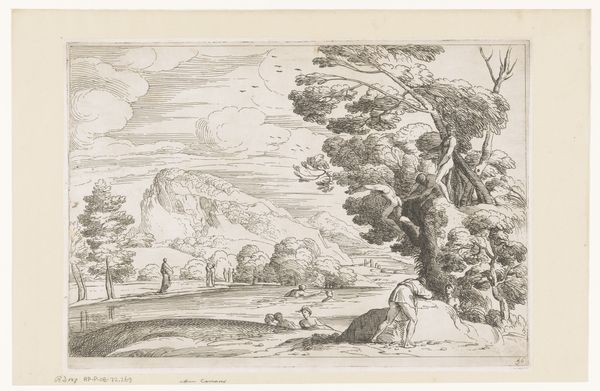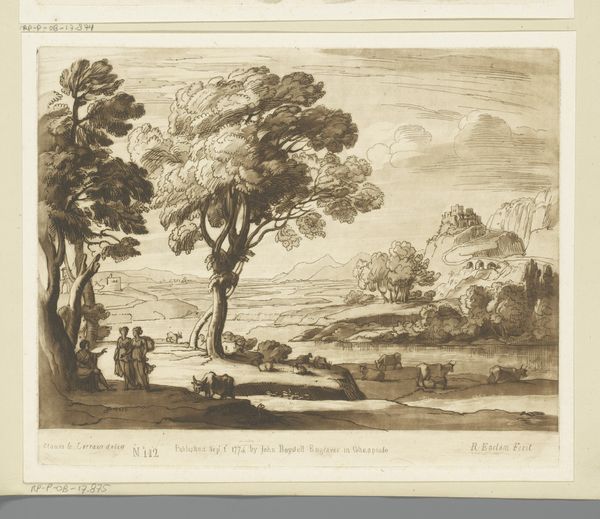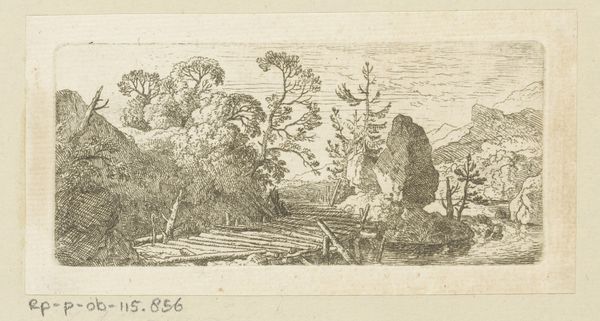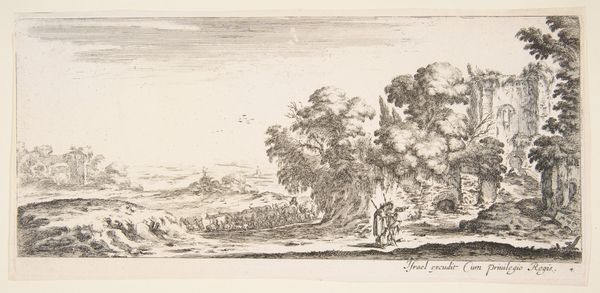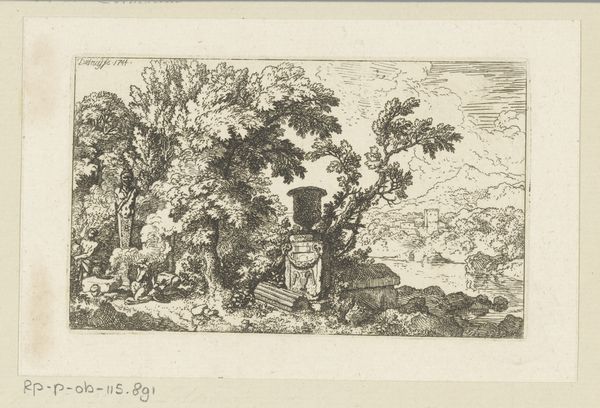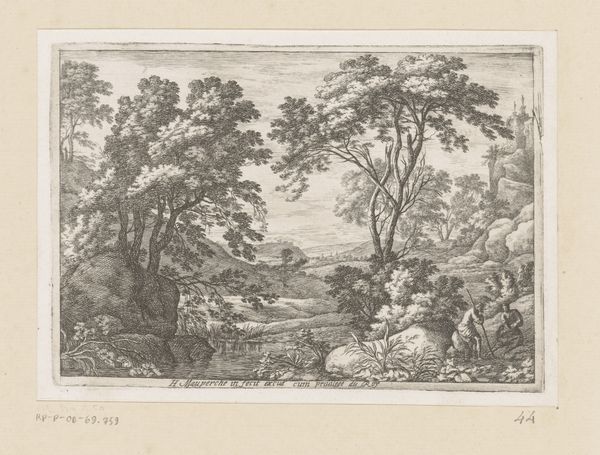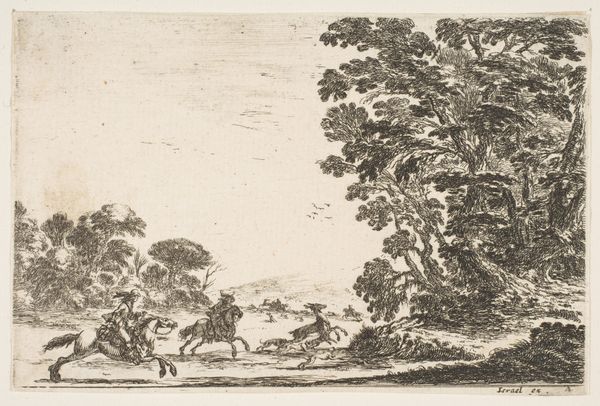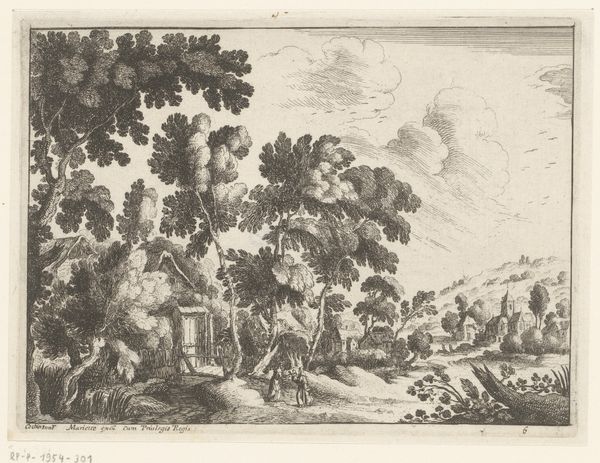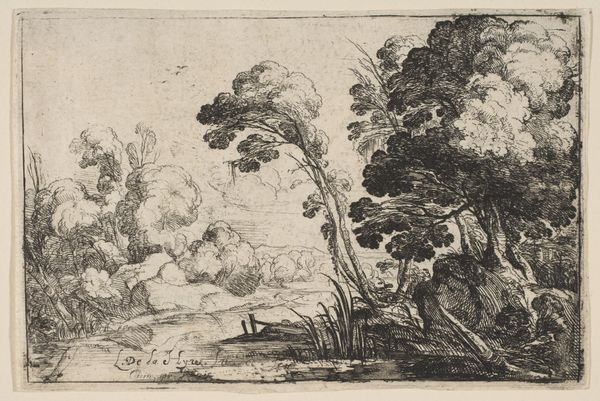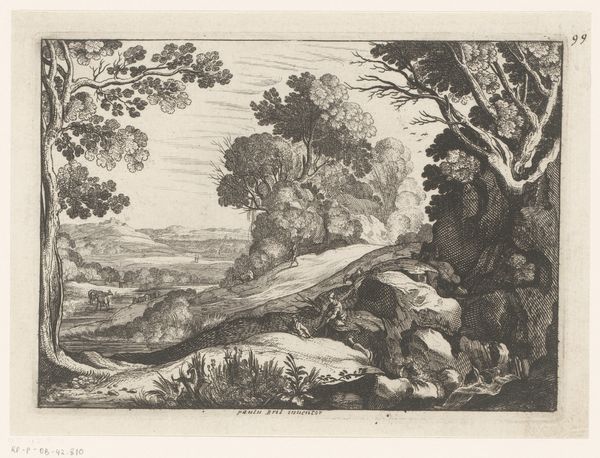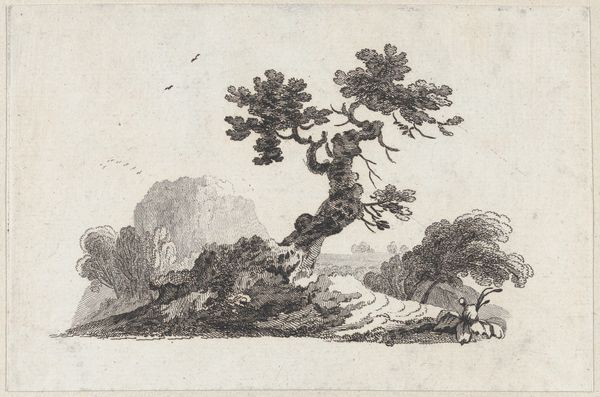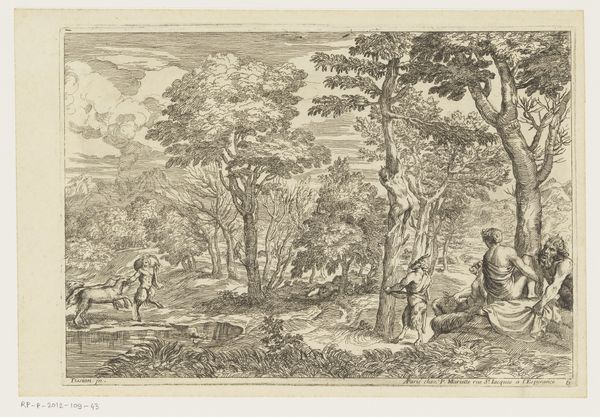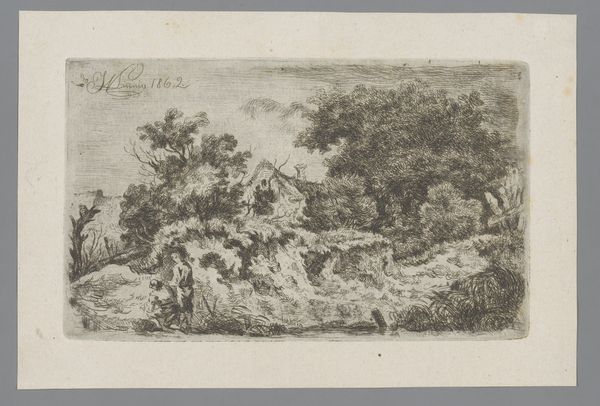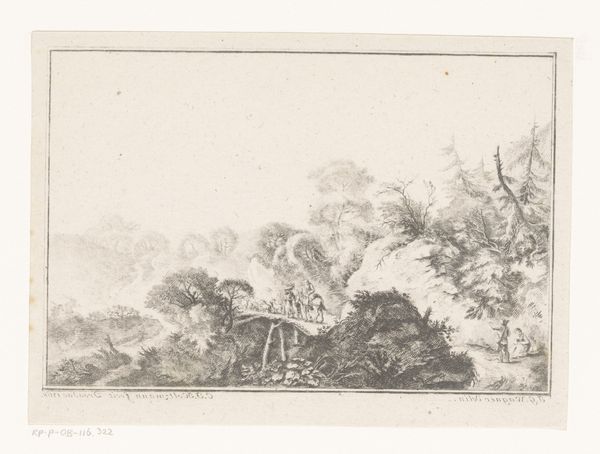
etching
#
baroque
#
animal
#
etching
#
landscape
#
figuration
#
line
Dimensions: height 261 mm, width 419 mm
Copyright: Rijks Museum: Open Domain
Curator: Today, we're looking at "Landschap met twee leeuwen," or "Landscape with Two Lions," an etching by Jean Pesne, dating from roughly 1666 to 1695, housed here at the Rijksmuseum. Editor: My first thought is how delicate it seems for a depiction of lions. The almost frantic lines describing the trees juxtapose surprisingly with the relative calmness of the animals. Curator: Absolutely, and note how Pesne, through the etching process, foregrounds line itself. This is line as a material construct, a kind of Baroque dance between nature's drama and the human labor crafting it. Editor: The linear quality is certainly dominant, yet the stark contrast allows your eyes to easily read the image; the foreground feels more chaotic, while the lions, off to the side, offer balance by directing your gaze to the landscape beyond. Curator: The distribution of ink and pressure are so demonstrative. Consider also how access to printing technology would affect how wider audiences encounter art at the time, impacting the relationship between artist, patron and artwork itself. Editor: From a semiotic perspective, it could also be read as an allegory—the lions perhaps symbolic figures, carefully placed within a deliberately unstable world, which challenges viewers to seek stability. Curator: I think that your comment speaks to an enduring tension between "high art" such as landscape etchings, and depictions of powerful animal figures. An audience might respond by emphasizing nature as beautiful, rather than being about socio-economic or historic issues concerning its production. Editor: Precisely. And regardless of artistic intention, what remains powerful is the image, its lines that evoke a world simultaneously in motion and serene, capable of triggering such discussions centuries later. Curator: A wonderful observation, and on that point, I encourage everyone to closely examine the techniques utilized in "Landschap met twee leeuwen", which reflect shifts within landscape conventions and printmaking practices during this transformative era.
Comments
No comments
Be the first to comment and join the conversation on the ultimate creative platform.
